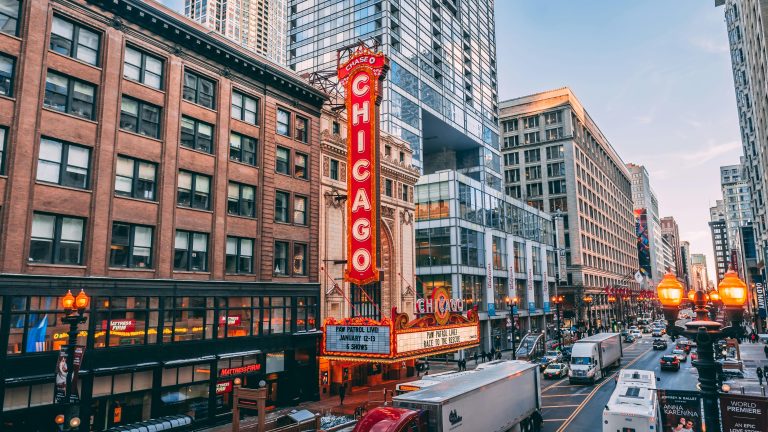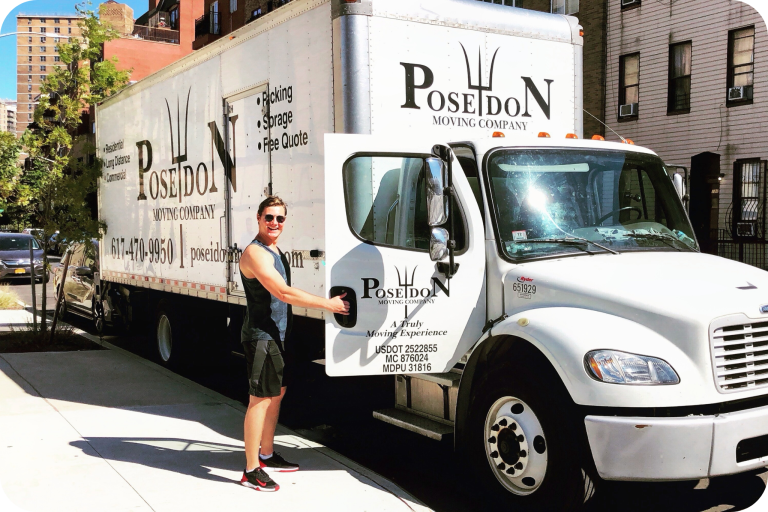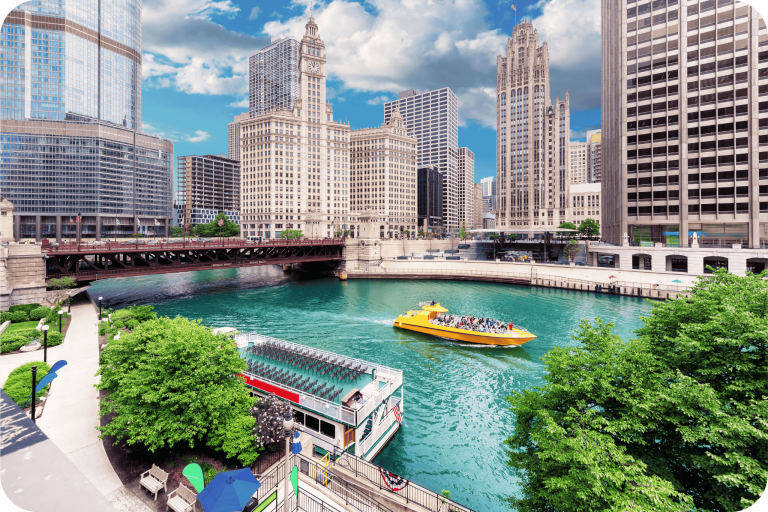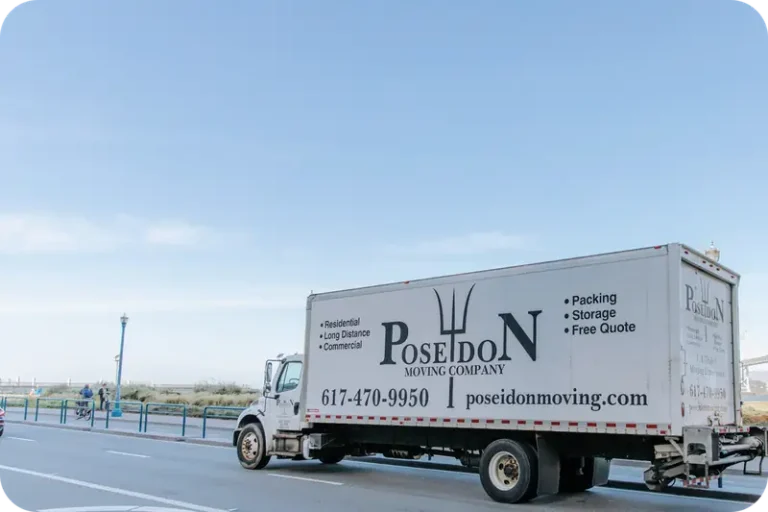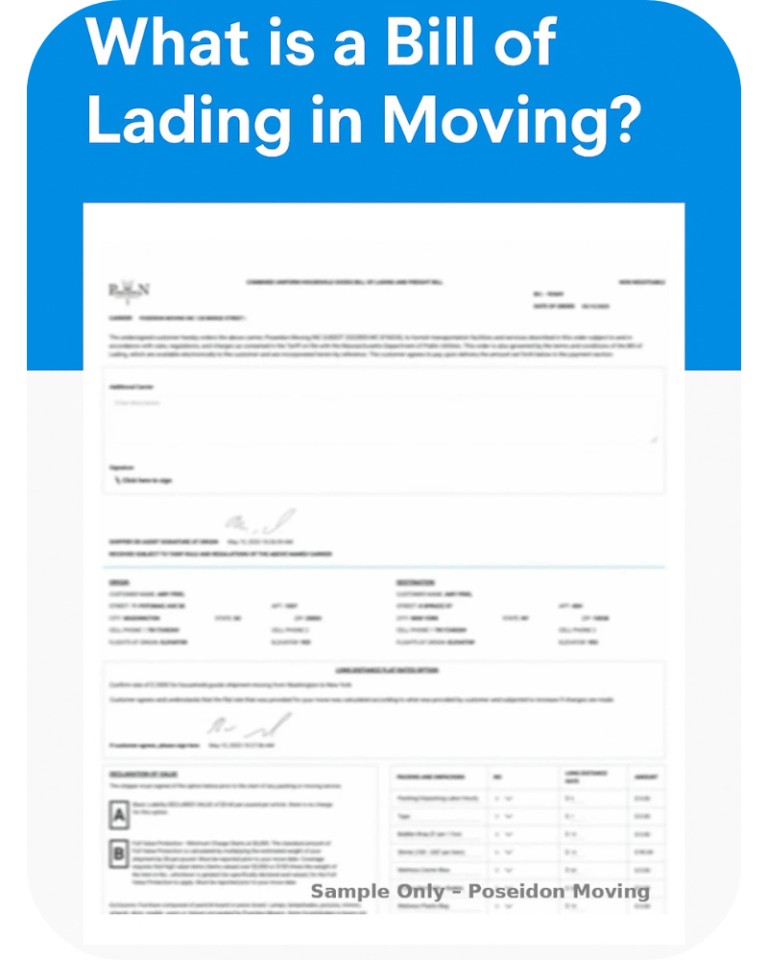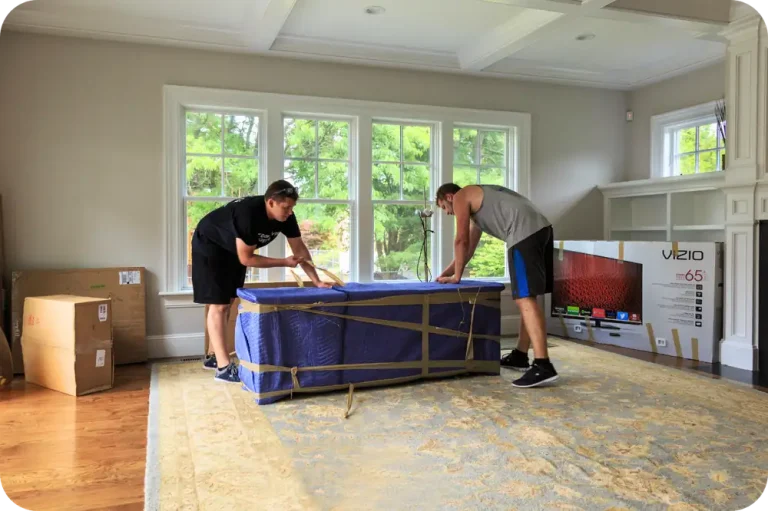There’s just something about Chicago. It sneaks up on you. Maybe it’s the way the skyline catches the light off the lake, or how the city still buzzes on a random Tuesday night. People come here for all kinds of reasons: a new job, a clean slate, or maybe just for the pizza, and somehow they end up staying longer than they planned.
Before you load the truck, it’s worth getting a feel for what you’re jumping into. Chicago isn’t like everywhere else. It’s got its own pulse, weather that can’t make up its mind, and neighborhoods that each tells a different story.
From your first quote with Poseidon Moving to unpacking that final box, here’s what to expect before making your big move to Chicago.
Why People Keep Moving to Chicago
Ask ten people what brought them here and you’ll get ten totally different answers. Some chased a career. Others just wanted a place that felt alive. A few came for a weekend and somehow never went back.
The city’s big but friendly. You can walk into the same café twice and suddenly feel like a regular. It’s busy for sure, but not the kind of chaos that swallows you whole.
What wins people over the most:
● Too much to do. Music everywhere, street festivals, lakefront paths.
● Neighborhoods with personality. Logan Square doesn’t feel like Lincoln Park, and that’s the fun of it.
● Prices that make sense. You get big-city perks without the constant financial panic.
Cost of Living in Chicago
When it comes to daily living, Chicago hits a sweet spot — not too pricey, not too cheap. A one-bedroom near the Loop can stretch your wallet — around $2,000 or more — but neighborhoods like Ravenswood, Avondale, or Pilsen offer cozy apartments for hundreds less.
Utilities usually hover between $150 and $200 a month, though winter can make those bills climb. Groceries and public transit are manageable, and while parking can test your patience, it’s just part of the Chicago experience.
Compared to cities like New York or San Francisco, living in Chicago feels surprisingly balanced. You still get that big-city energy without your rent eating every paycheck. The trick is knowing where to spend and where to save — some splurge on location and cut back on dining out, others do the reverse. Either way, life here feels doable, not draining.
If you want fewer surprises, Poseidon Moving’s local movers can help map out what you’ll spend before you arrive. It’s one less thing to stress over when you’re figuring out which neighborhood feels like home.
For updated comparisons, you can also explore the Chicago cost of living data to see how prices stack up against other U.S. cities.
Best Neighborhoods in Chicago
Finding your Chicago home can be challenging. Chicago isn’t just one uniform block of buildings. There are dozens of variations of buildings, world orders, and, of course, apartments. Imagine being in one coffee shop, then getting to another five miles away, and it feels like a different city entirely.
Lincoln Park – Classic Chicago. Clean streets, dogs everywhere, people jogging at 6 a.m. It’s polished, safe, and expensive, but you get that lake breeze and skyline view that never really gets old.
Wicker Park – A family of old-Midwestern settlers, Brooklyn geese. On the higher levels are Record stores, a tattoo shop, and cocktail bars. In the lower levels are people creatively looking like rough errands.
Lakeview – Near the lake and never quiet for long. You’ve got Wrigley Field down the road, bars that stay up late, and a steady crowd that actually knows their neighbors.
Logan Square – If you like food, this one’s a gem. Tacos, coffee, local breweries, all with big trees and easy streets. Young couples and freelancers love it.
South Loop – Feels newer. More glass buildings, clean sidewalks, and space to breathe. You can walk to the museums and still have quiet nights.
Hyde Park – A little more academic, a little more historic. The University of Chicago gives it a steady heartbeat, and the architecture makes you slow down just to look around.
Honestly, half the fun is exploring until you find your spot. If you’re coming from another state, Poseidon Moving’s Chicago team can handle the heavy work while you wander the neighborhoods and get your bearings. Moreover, Choose Chicago’s official guide is also a great resource for exploring neighborhoods and local life before you move.
Weather: What You’re Signing Up For
Let’s not sugarcoat it, Chicago weather has moods. It’ll charm you one week and test your patience the next. The city’s weather is an adventure in itself. The winters are cold and the snow lingers, while the summers are bright, breezy, and filled with festivals.
Here’s what you are signing up for:
Winter: Cold, sharp, and windy enough to make you question life choices. Get a serious coat, not the cute kind, the survival kind. Still, when the first snow hits the skyline, it’s pure movie magic.
Spring: Shows up late but makes an entrance. Suddenly, the parks fill, patios reopen, and strangers start smiling again.
Summer: Unreal. Festivals every weekend, the lakefront buzzing, and the smell of grilled food floating down the block. You forget winter even existed.
Fall: Cool, crisp, golden. The city feels slower for a minute, and everyone is soaking up those last warm evenings before the cold sneaks back.
Season |
What to Expect |
Local Tip |
|---|---|---|
Winter |
Freezing temps, snow |
Layer up & explore indoor events |
Spring |
Fresh air, blooms |
Visit Lincoln Park Zoo for free exhibits |
Summer |
Festivals, lake fun |
Don’t miss the Air & Water Show |
Fall |
Crisp, calm days |
Best time for long city walks |
If you’re planning a winter move, Poseidon Moving can tweak your schedule so you’re not unloading boxes while your fingers freeze.
Finding a Place to Live: Renting or Buying in Chicago
Hunting for a place in Chicago isn’t just about price; it’s about vibe. Some people want skyline views, others just want a quiet street with a good coffee shop nearby. Renting is the go-to move if you’re new here. It gives you room to explore different corners of the city before picking your favorite. But if you already know you’re sticking around, buying can be a smart long-term call.
You can find your rhythm in the pace of your surroundings. The mix of vintage and modern adds variety. The different styles and shapes of buildings will always have something that fits you.
Poseidon Moving helps ease some of your moving stress so you can focus on the more important stuff —like your spot.
Option |
Who It Suits |
Good Side |
Not-So-Good Side |
|---|---|---|---|
Renting |
Newcomers |
Flexibility, low commitment |
Rent may rise yearly |
Buying |
Long-term plans |
Stability, equity build-up |
Big upfront costs |
Condos |
City lovers |
Great amenities |
HOA fees can bite |
Suburbs |
Families |
More space, quieter |
Commute adds time |
Getting Settled: Everyday Life in Chicago
Once the boxes are gone and the Wi-Fi’s up, Chicago starts to feel smaller — in a good way. You’ll find your go-to corner store, a favorite park, maybe even a diner that remembers your order. That’s the charm here: big city energy, small community moments.
Costs vary depending on your location. The Loop and River North are on the higher end, while Avondale and Bridgeport are more affordable. The area is also quite walkable and civil transport is readily available, so most key services like gyms, supermarkets, and cafes are close enough.
If unpacking sounds like a chore, Poseidon Moving provides customers with full-service moving, so new locations can feel like home without the hassle.
Expense |
Average Cost (Monthly) |
Tip |
|---|---|---|
Utilities |
$150–$200 |
Winter can bump it up |
Transit |
$75 CTA pass |
Buses + trains unlimited |
Groceries |
$350–$450 |
Cheaper at local markets |
Internet |
$60–$80 |
Strong across the city |
Gym |
$40–$100 |
Varies by neighborhood |
Chicago Lifestyle
Chicago’s one of those cities that gets under your skin without trying. Maybe it’s the noise, maybe the food, maybe the way people just live here, real and unfiltered. You come for a visit, blink, and suddenly it’s home.
Food: Sure, deep-dish is everywhere, but the real stuff? It’s in those tiny diners and corner spots that don’t even have signs. You sit down, they hand you a plate, and it’s just good, no fuss, no hype.
Music: The city hums all the time. You’ll hear someone strumming a guitar near the L tracks, a band warming up in a bar basement, or a sax echoing through an alley. It’s not polished, just real.
Parks: Big, green, open — they break up the noise. You will see kids, joggers, and those simply resting on benches while passing the time as the lakefront offers a view, especially at sunset.
People: You will also find straight talkers and, while being teased for being new, some are very friendly, and they will even help when your car is stuck in a snow bank. They complain, sure, but it is funny because we are all in this together.
It is the culture that snaps the people too, the interesting street art, farmers’ markets every weekend, and diverse food festivals that pop up all over the place. Every neighborhood has a captivating story to tell, from the historic brownstones in Old Town to the rich murals in Pilsen.
But don’t worry, Poseidon Moving makes it easier to navigate these changes; their flexible schedules and secure storage options mean your stuff stays safe no matter the forecast.
Transportation in Chicago
One of the nicest things about Chicago? You don’t actually need a car to live well here. Between the “L” trains rumbling overhead, buses cutting through every neighborhood, and the Metra lines reaching out to the suburbs, you can get pretty much anywhere, fast, cheap, and without losing your mind in traffic.
Walking becomes a second job out of the Chicago downtown area. For groceries, coffee, and pizza, anything you need is a few blocks away. In places like Jefferson Park or Beverly, having a car helps a little more in the quiet sectors.
If you’re planning to explore Chicago by car or public transit, it’s worth getting familiar with how the city moves. The layout might seem intimidating at first, but once you learn the rhythm of traffic lights, one-way streets, and transit routes, everything clicks into place. Downtown can be dense, but most neighborhoods are surprisingly easy to navigate, and you’ll quickly develop your favorite shortcuts or preferred train lines. Whether you’re commuting to work, heading to the lake, or visiting a new restaurant across town, getting around soon becomes second nature.
Parking tip: Downtown spots are gold. If you’re renting, double-check if your building includes one, or you might spend half your week reading street-cleaning signs.
Transit tip: Grab a Ventra card. It covers trains and buses and saves you the awkward scramble for cash.
Rideshares and Divvy bikes fill in the gaps. Parking, however, can test your patience; some areas need permits or have strict street cleaning schedules.
Here’s a quick look at your main transportation options in Chicago:
Mode |
Average Cost |
Best For |
|---|---|---|
CTA Train/Bus |
$2.50 per ride |
Daily commuters |
Divvy Bikes |
$15/month |
Short rides, eco travel |
Rideshare |
Varies |
Late-night or group travel |
Personal Car |
Gas + parking |
Suburban life |
Poseidon Moving recommends setting up your new route before moving day. Knowing how to get around will help you feel at home faster.
You can plan your routes using the Chicago Transit Authority (CTA) site — it lists train times, fare options, and system maps for easy navigation.
Pro Relocation Tips for a Smooth Chicago Move
Moving to a new city is part logistics, part pacing — and a little planning goes a long way. These practical tips will save you time, money, and stress on moving day, so you can enjoy the first few weeks in Chicago instead of chasing boxes.
● Downsize before packing. The less you move, the faster and cheaper it gets. Sort clothes and household items into “keep / sell / donate” piles — if you haven’t used something in a year, consider letting it go.
● Label boxes by room, not just by item. Write the destination room and a short contents list on every box (and mark “essentials” on the few you’ll need immediately). Unloading is quicker and unpacking feels far less chaotic.
● Check building move-in rules. Many Chicago apartments require elevator reservations, specific move-in hours, or insurance certificates. Call the building manager early so your movers aren’t blocked at the door.
● Plan your route early. Downtown streets can be tight and one-way; know loading zones and peak traffic times. Ask Poseidon Moving about recommended arrival windows and where to park the moving truck.
● Keep essentials in one bag. Pack a “first-night” kit with chargers, toiletries, bedding, a change of clothes, and basic kitchenware — so you don’t have to open dozens of boxes to make the first night comfortable.
● Notify services in advance. Update your address for USPS forwarding, utilities, internet, and banks at least a week before moving to avoid service gaps or missed bills.
● Measure doorways and large items. Confirm that couches, wardrobes, and appliances will fit through hallways, stairwells, and elevators — especially in older Chicago buildings with narrow entries.
● Confirm timing and contact info. Give your movers the building manager’s phone number and a backup contact. Confirm arrival windows 48 hours before to reduce day-of surprises.
If it seems too overwhelming, Poseidon Moving will be there to assist you with the rest and take care of the tedious parts—packing, timing, and storage—so you can take a breath and focus on the enjoyable parts.
Final Thoughts
Moving to Chicago, Illinois is more than just a change of boxes and address; it involves syncing with a highly dynamic metropolis. The city is loud, cold, warm, crowded, and, in many ways, comforting. One might initially hate the cold wind, and then someday it won’t bother you much.
Let Poseidon Moving handle the heavy lifting and scheduling. You just show up —ideally with some coffee and a warm jacket —and let the rest of the situation fall into place. Chicago has a way of helping everything else make sense. Get your free moving quote from Poseidon Moving today.
